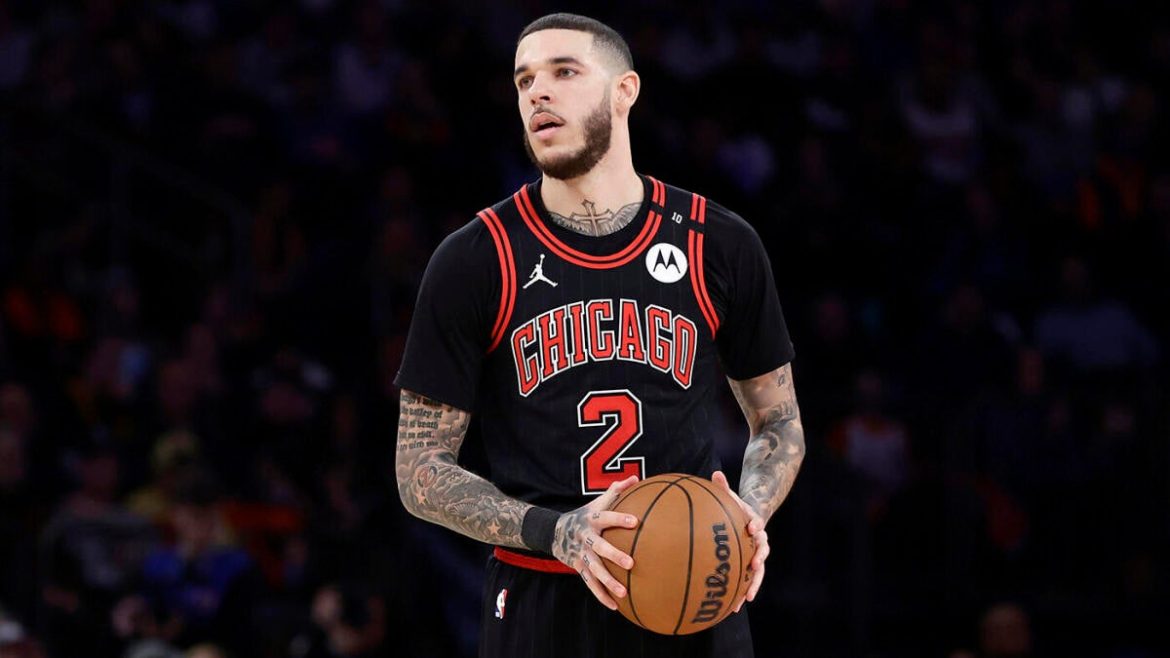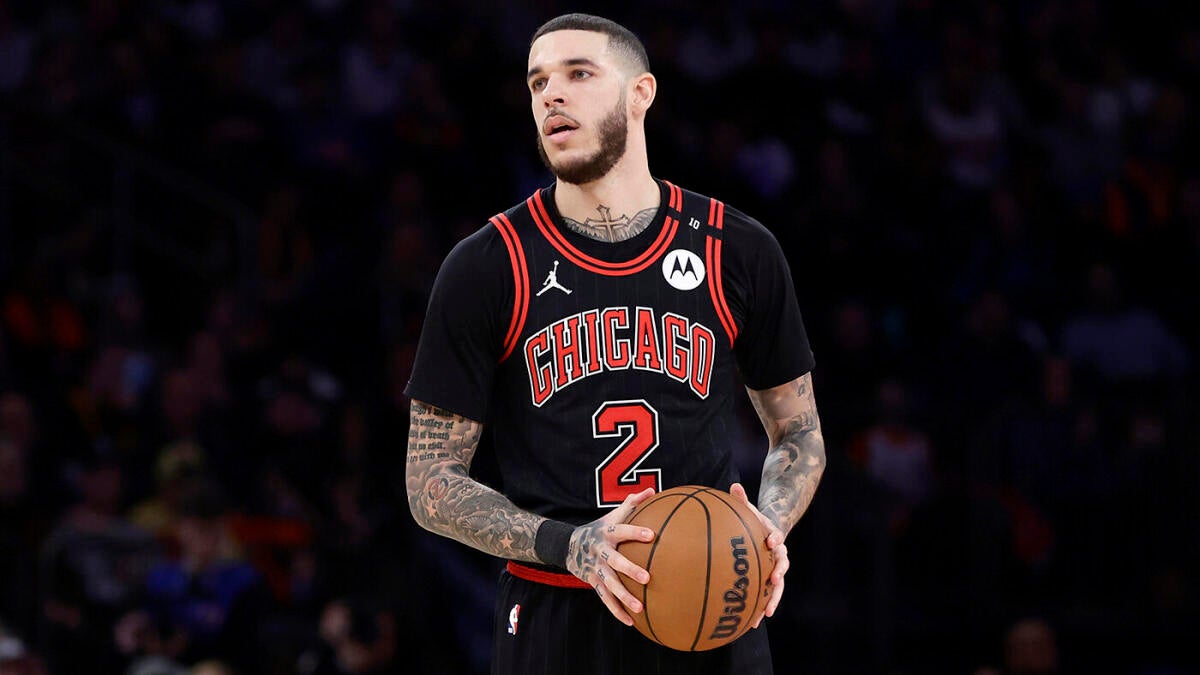The recent trade between the Chicago Bulls and the Cleveland Cavaliers, which saw Lonzo Ball move to Cleveland in exchange for Isaac Okoro, has sparked extensive debate and analysis within NBA circles. This transaction is significant not only for the players involved but also for its implications on both teams’ strategies, roster construction, and future potential. The trade underscores the delicate balance between risk and reward in NBA roster management, particularly when dealing with players recovering from injuries and those with defensive specialties.
Context and Background of the Trade
The Chicago Bulls’ decision to trade Lonzo Ball to the Cleveland Cavaliers in exchange for Isaac Okoro comes at a pivotal moment for both franchises. Lonzo, a former second overall pick in the 2017 NBA Draft, had a tumultuous journey back to the court after a serious knee injury and subsequent complications. His return to the Bulls for the 2024-25 season was met with cautious optimism, as he appeared in 35 games, averaging 7.6 points, 3.3 assists, and 3.4 rebounds over 36.6 minutes per game. Despite his solid contributions, the Bulls opted to trade him, likely due to concerns over his long-term durability and the need for a more consistent defensive presence.
Isaac Okoro, a 24-year-old wing with five years of NBA experience, is known for his defensive tenacity and versatility. His ability to guard multiple positions and contribute as a secondary scorer made him an attractive asset for the Bulls. The Cavaliers, meanwhile, saw an opportunity to bolster their backcourt with a playmaker like Lonzo, who could enhance their offensive fluidity and provide much-needed court vision.
Player Profiles and Career Trajectories
Lonzo Ball: A Playmaker with a Checkered Past
Lonzo Ball’s career has been a rollercoaster of promise and setbacks. Drafted as a highly touted prospect, he quickly established himself as a dynamic playmaker with exceptional passing vision and defensive instincts. However, his career was derailed by a series of knee injuries, which kept him sidelined for extended periods. His recent resurgence with the Bulls demonstrated his ability to contribute as a facilitator and secondary scorer, averaging 7.6 points and 3.3 assists per game.
The Cavaliers are betting on Lonzo’s potential to stabilize their backcourt and ignite their offense. His playmaking abilities and defensive versatility align well with Cleveland’s competitive aspirations. However, the trade also carries significant risk, as Lonzo’s injury history could resurface, potentially undermining the Cavaliers’ plans.
Isaac Okoro: The Defensive Anchor
Isaac Okoro’s strengths lie primarily in his defensive prowess. His athleticism and physicality allow him to guard some of the league’s most challenging perimeter players. Offensively, Okoro is a developing player who has shown flashes of scoring ability but remains largely a complementary piece. His defensive consistency and versatility make him a valuable asset for the Bulls, who are looking to bolster their perimeter defense and build a more balanced roster.
The Bulls likely see Okoro as a foundational role player who can complement their offensive weapons. His youth and experience fit well within their long-term plans, providing a stable defensive presence while allowing other players to flourish offensively.
Strategic Implications for the Chicago Bulls
The trade of Lonzo Ball for Isaac Okoro signals the Bulls’ intent to prioritize defensive stability and risk management. Lonzo’s injury history posed a significant risk, and the Bulls opted to acquire a younger, healthier wing who brings defensive upside. Okoro’s ability to guard multiple positions and contribute as a secondary scorer aligns well with the Bulls’ defensive priorities and positional needs.
This trade also suggests that the Bulls are envisioning a longer-term rebuild or retooling, focusing on a core that emphasizes defense and positional versatility. By acquiring Okoro, the Bulls have added a player who can complement their offensive weapons and provide a consistent defensive presence. This move could be a strategic adjustment aimed at stabilizing their rotation and ensuring long-term success.
Strategic Implications for the Cleveland Cavaliers
For the Cavaliers, acquiring Lonzo Ball represents a move toward enhancing their playmaking and offensive fluidity. Cleveland’s roster has shown promise but lacked consistent elite distribution and court vision from the point guard spot. Lonzo, if healthy, offers this dimension and also fits well defensively, aligning with Cleveland’s competitive aspirations.
This trade is a calculated risk for the Cavaliers, betting on Lonzo’s rejuvenation post-injury to unlock their offensive potential and strengthen their backcourt. It may also signal their willingness to prioritize ball movement and dynamic guard play in their tactical approach. With Lonzo’s relatively modest salary and Cleveland’s salary cap flexibility, this trade makes financial sense as well.
Broader League and Fan Reactions
Opinions on this trade are mixed among fans and analysts. Some view the Bulls as having compromised by giving up a player with Lonzo’s playmaking qualities for Okoro, who is more one-dimensional offensively. Conversely, others appreciate the Bulls’ risk management strategy, considering Lonzo’s injury history.
Cavs fans are hopeful that Lonzo can provide the missing spark and that the gamble on his health pays off, potentially elevating Cleveland’s competitiveness in the Eastern Conference. The trade is seen as bold and tailored toward immediate improvement in backcourt production.
Future Outlook and Potential Developments
Both teams face critical junctures in their development. Lonzo’s performance in Cleveland will be closely watched to gauge if he can sustain health and recapture his pre-injury productivity. His success could propel the Cavaliers deeper into playoff contention.
The Bulls will likely integrate Okoro into their defensive schemes and perhaps build a line-up that maximizes both his and other players’ strengths, potentially moving toward a more defense-oriented identity. How Okoro’s role evolves and whether the Bulls pair him with complementary offensive players will significantly influence their season trajectory.
Conclusion: A Balanced Trade With Distinct Team Benefits
This trade between Lonzo Ball and Isaac Okoro represents more than a simple player-for-player swap. It reflects strategic choices by the Bulls and Cavaliers aligned with their immediate needs and longer-term visions. Chicago acquires a defensive wing capable of steady contribution and durability, adjusting to the risks posed by Lonzo’s injury history. Cleveland takes a calculated chance on a recovering star playmaker with the potential to reshape their offense.
Both teams emerge with assets tailored to their challenges and ambitions. Lonzo’s health and adaptation in Cleveland, along with Okoro’s fit and growth in Chicago, will determine which franchise ultimately benefits more from this matchup. Until then, this trade stands as a notable example of NBA roster building balancing risk, potential, and systemic fit.





